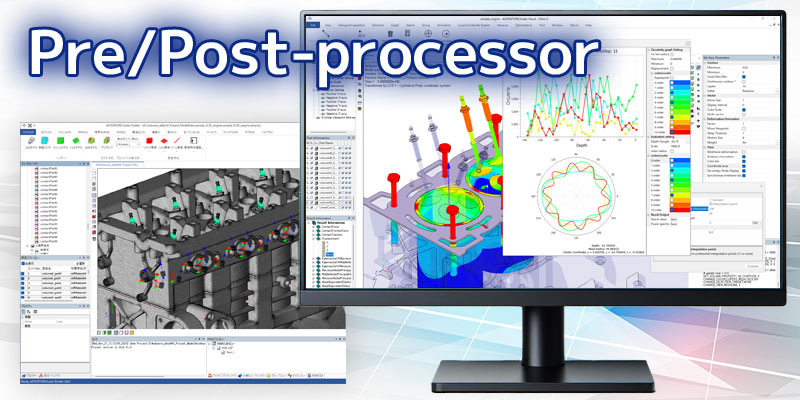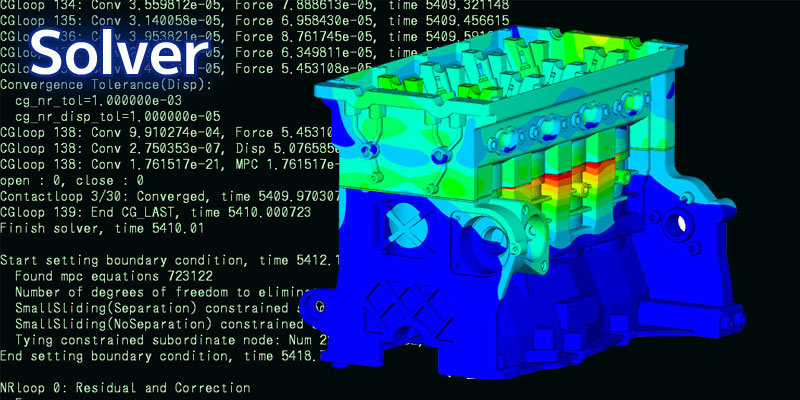ADVENTURECluster
ADVENTURECluster is a parallel CAE system developed in Japan based on the ADVENTURE system, which is the achievement of the ADVENTURE project sponsored by Japan Society for the Promotion of Science Future Development Project and commercialized and enhanced by Allied Engineering Corp.
ADVENTURECluster has been developed based on the following basic concepts.
- The solver runs on wide range of environment, from PC to HPC clusters and to large-scale cloud systems. Complex and large scale analytical models are solved tremendously quickly with the power of parallel computation.
- The pre/post-processor is designed to provide an easy-of-use operation even for a huge and sophisticated models. In addition, macro function is available for the customized routine operation.
- Collaborative tools open up new possibilities for multi-physics analyses, such as coupled analysis between fluid and/or resin flow analysis and ADVETURECluster structural analysis.
Why is it "powerful for large scale analyses"?
As the number of parallel computers increases, parallel efficiency becomes a critical issue for computational programs to maintain the scalability in parallel execution. Generally speaking, the computation program of the simultaneous equations, which is the core of CAE analysis, has ended up with a point where it cannot speed up the computation any further with a certain number of parallel nodes.
ADVENTURECluster has been developed to utilize a unique solution method (a hybrid method that combines the CGCG method and the direct method) that maintains high parallel scalability and low memory consumption even when the number of parallel nodes is increased.
Lead-free soldering and MEML library
ADVENTURECluster's MEML (Model of EcoMaterials Library) library is implemented in ADVENTURECluster to predict the life of lead-free soldering and evaluate its reliability. This function was developed jointly by Toshiba Corporation, the Ohno Laboratory at Nagoya University, and Toshiba.
-

ADVENTURECluster Pre/Post-processor
ADVENTURECluster Pre/Post-processor is a system that can automate large-scale analyses with a variety of features required from model building to evaluation and high-precision mesh generation.
-

ADVENTURECluster Solver
The ADVENTURECluster solver uses the CGCG method to solve linear and nonlinear systems with more than 100 million degrees of freedom, which has not been possible with other solvers. In addition, it has high parallel scalability and can be used in multi-core and cluster systems to achieve high speed. Moreover it is growing and improving its performance listening to users requests intensively.